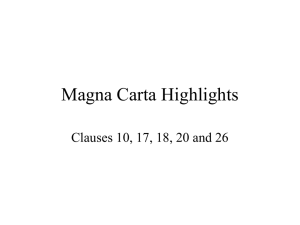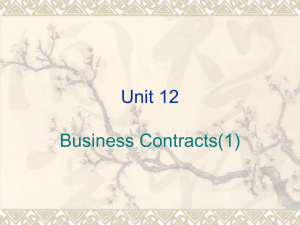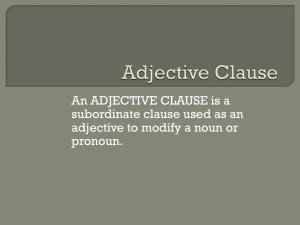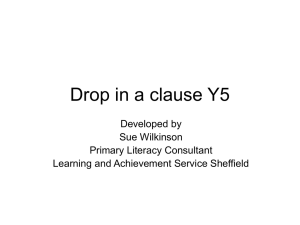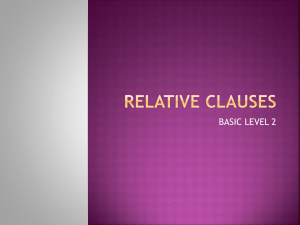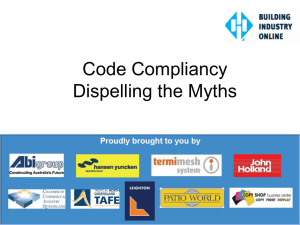15 May 2014 Integrating management systems
advertisement
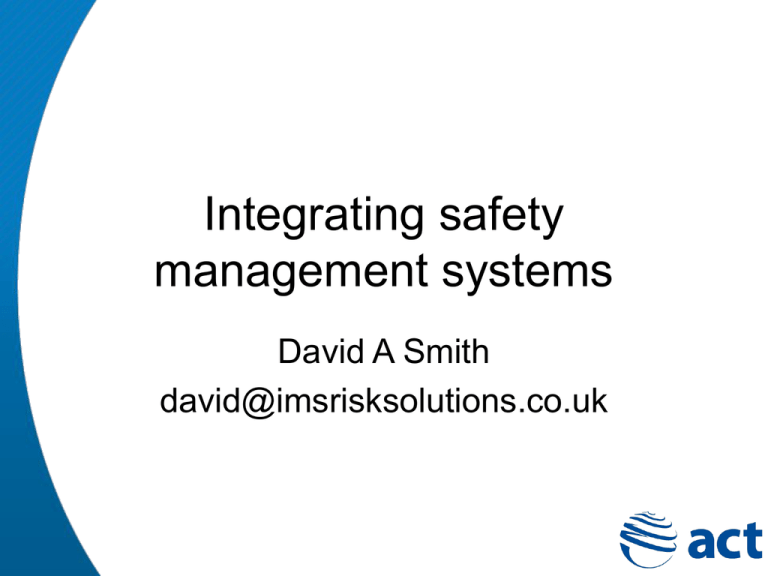
Integrating safety management systems David A Smith david@imsrisksolutions.co.uk Integrating safety management systems Emma Griffiths 01384 447036 emma.griffiths.actassociates.co.uk Topics • • • • Refreshing of hsg65 and its approach BS OHSAS 18001 The new ISO 45001 OHS requirement standard New requirements for all management system standards • Integration of management system standards and OHS into the organization’s business processes • OHS as an integral part of an organization’s resilience Who am I? • A scientist • Technical solution solver within BR – Laboratory analysis – Forensic investigations – OHS and environmental support • Standards writer • Author • Consultant, auditor and trainer hsg65 • I was involved by the HSE in the refreshing of hsg65 with the aim of making it more in line with the management of other business risks • The Delphi research and subsequent surveys helped to produce a greater focus on risk and over focus on hazards alone • The professional committee members involved on BSI Committee welcomed and supported the new approach BS OHSAS 18001 • First produced in 1999 by a consortia in respond to customer demand for an auditable standard – not a BS at that time • Now a full BS with two supporting documents • Over 90,000 registrations by end of 2011 The new ISO 45001 OHS requirement standard • Many attempts made to gain international support for an ISO standard. • In 2013 a substantial positive vote was given for producing the first ISO requirement standard in this area • 40+ countries involved and about 10 observer bodies including ILO and IOSH • UK have Chair and Secretariat Why does it take so long? Committee member (all volunteers) fatigue! New requirements for all management system standards • ISO have decreed that all management system requirement standards (MSS) shall use a common structure, core text etc. • This is stated in Annex SL of the ISO Directives • The aim is to facilitate integration and to avoid multiple approaches for similar elements of management Annex SL Structure • • • • • • • Clause 4 – Context of the organization Clause 5 – Leadership Clause 6 – Planning Clause 7 – Support Clause 8 – Operation Clause 9 – Performance evaluation Clause 10 - Improvement Clause 4.1 Understanding the organization and its context : • The organization shall determine external and internal issues that are relevant to its purpose and that affect its ability to achieve the intended outcome(s) of its XXX management system. Clause 4.2 Understanding the needs and expectations of interested parties: • The organization shall determine – the interested parties that are relevant to the XXX management system, and – the requirements of these interested parties. Clause 4.4 XXX Management system • The organization shall establish, implement, maintain and continually improve an XXX management system, including the processes needed and their interactions, in accordance with the requirements of this International Standard. Leadership and commitment 5.1 • Top management shall demonstrate leadership and commitment with respect to the XXX management system by: – ensuring that the XXX policy and XXX objectives are established and are compatible with the strategic direction of the organization – ensuring the integration of the XXX management system requirements into the organization’s business processes Actions to address risks and opportunities - Clause 6.1 --------- determine the risks and opportunities that need to be addressed to: – assure the XXX management system can achieve its intended outcome(s) – prevent, or reduce, undesired effects – achieve continual improvement. Annex SL Structure • • • • • • • Clause 4 – Context of the organization Clause 5 – Leadership Clause 6 – Planning Clause 7 – Support Clause 8 – Operation Clause 9 – Performance evaluation Clause 10 - Improvement So what does this mean? • It means those with ISO 9001 (quality systems), ISO 14001 (environmental management systems) and (eventually) IS0 45001 will all have to ensure they reflect: – Context – Needs of interested parties – Integrate into overall management system etc – Risk and opportunities Many common core elements • Process mapping • Organizational roles and responsibilities • Support – Resources – Communication – Documentation – Competency • Audit, review, improvement PAS 99 • Specification of common management system requirements as a framework for integration • Based on Annex SL • Helps organizations align their systems in line with the revised structure • Helps facilitates the integration of two or more systems PAS 99 (2) Potential benefits: • improved business focus; • more holistic approach to managing risks; • less conflict between individual MS; • reduced duplication and bureaucracy; • more effective and efficient audits both internally and externally; • easier facilitation of the requirements of any new MSS that the organization wishes to adopt. PAS 99:2012 Framework Improvement 10 10.1 Nonconformity and corrective action 10.2 Continual improvement Leadership Improvement ACT Performance evaluation 9 Performance Evaluation Context of the organisation 4 4.1 Understanding organisation and context 4.2 Understanding need and expectations of interested parties 4.3 Determining scope of the management system 4.4 The management system Leadership 5 5.1 Leadership and commitment 5.2 Policy 5.3 Organizational roles, responsibilities and authorities PLAN Planning 6 Planning 6.1 Actions to address risks and opportunities 6.2 Objectives and planning to achieve them 9.1.Monitoring , measurement, Support 9.2 Internal audit 9.3 Management review CHECK Operation Operation 8 8.1 Operational planning and control DO Support 7 7.1 Resources 7.2 Competence 7.3Awareness 7.4 Communication 7.5 Documented information OHS as an integral part of an organization’s resilience • Resilience is the new area of standardisation but is in its infancy • It is defined as: “The capacity of an organization to anticipate, respond and adapt to change in order to survive and prosper”. (BS 65000 draft) • It is not business continuity; it is essentially about anticipation and adapting Role of OHS • OHS and managing other risks related to an organization are essential for resilience • Important to ensure that the management arrangements are integrated where practicable for efficiency and reduce risk of conflict Topics covered • • • • Refreshing of hsg65 and its approach BS OHSAS 18001 The new ISO 45001 OHS requirement standard New requirements for all management system standards • Integration of management system standards and OHS into the organization’s business processes • OHS as an integral part of an organization’s resilience Conclusion Questions

